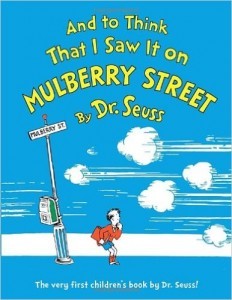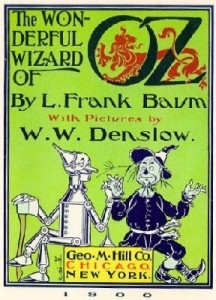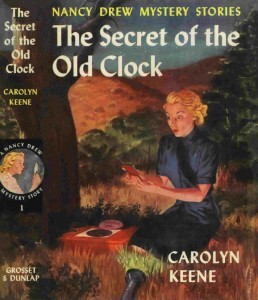Lea Wait's Blog, page 266
March 11, 2016
Out to Canaan, or Some Assembly Required
John Clark on the democratic process.

Some of many political souvenirs.
I got involved in politics during the Vietnam War and learned in the process that individuals really could make a difference. Unfortunately my addictions got in the way of continuing to have any positive effect, culminating one night in Portland following Brownie Carson’s loss in the campaign for the U.S. House seat he was running for. I can chuckle today, but at the time and for many years afterward, that night was cringeworthy.
When I started my recovery in 1980, I backed away from anything but local civic involvement, satisfying myself with 20 years on the budget committee in Chelsea, as well as serving as chair of the town planning board for six years. The latter was a real adventure in a town that was fragmented, mistrustful and populated with some real characters. I remember my neighbor Edna Morrison describing one local real estate magnate as being so crooked they would need to screw him into the ground instead of burying him when he died, while another broke down in tears when his business burned down with all his hoard of cash in the walls.
I have never missed voting in a state or national election and have only missed a handful of town votes, mainly ones where there was no opposition, or we were away at the time. My only foray into politics since moving to Hartland was as public relations person for Daniel Swain when he ran for the local house seat four years ago.
Despite a growing cynicism about the integrity of politics in general and living in a state that elected one of the world’s most notorious morons not once, but twice, I found myself ‘feeling the Bern’ this time around. I’ll be the first to admit that it’s hard to find a candidate running for national office who hasn’t sold part or most of their soul to the devil along the way, and that’s contributed to my general avoidance of political activity, but I remember how I felt when McCarthy ran in 1968…a sense of hope and excitement that he might really make a difference. That feeling is back.
After 25 years as a registered independent, I became a democrat three weeks ago so I could participate in the caucus last Sunday. Beth and I, along with Nick Berry, my replacement at the Hartland Public Library, arrived at the Canaan fire station to join a steady stream of people. That site served Canaan, Hartland, Palmyra and Saint Albans. I’d been to caucuses way back, but was hazy on the process. Given that at least a third of those who came seemed to be first-timers, coupled with the room not being big enough, there was an initial, but genial chaos.
I was happy to see several familiar faces and an agenda on the whiteboard, not to mention hot coffee and some great munchies. The crowd was a definite representation of Somerset county, a few tats, a few missing teeth, some toddlers, caps featuring logging, construction and New England sports themes as well as a solid core of well educated retired folks.
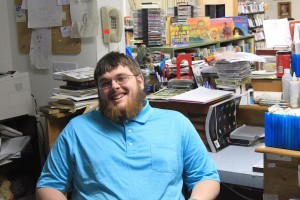
Hold the Mao, it’s Chairman Nick.
Craig and Randy (county and town chairs) helped establish order and we were on the road to democracy. I’d forgotten that citizen participation at this level requires more than simply raising your hand when choosing a presidential candidate. After we grouped by town at various tables, each needed to have a secretary and it was strongly suggested we choose a town party chair as well. With a whopping seven (eventually swelling to eight) from Hartland, I ended up being secretary, while Nick got elevated to the lofty position of Hartland party chair. We learned that Hartland would have three votes for a presidential candidate based on the number of registered Democrats in town. Before an actual vote, participants were able to speak on behalf of the person they supported. At least ten of the hundred in attendance did so, with speeches ranging from short and succinct to multi-minute rambles that had to be refocused by the caucus chair. It was another perfect example of democracy in action. Next up was opening and counting absentee ballots. We had two, while Saint Albans with a similar population had twelve. We noted who was selected on them, then discussed among ourselves before making our choices. The Hartland tally was six for Clinton, four for Sanders which translated to two Hilary votes to one Bernie for the state convention in May.

Fo sho.
There was more to do, beginning with finding three people willing to go to the state convention in May down in Portland. At first Mark and Deb who are also members of the library book discussion as are Beth and I, were willing to go, but they realized someone needed to stay home and care for their goats, so Beth and I, along with Mark will represent Hartland come May. The entire process was intimidating to some, exciting for many and hopefully satisfying for all. We headed home 2 ½ hours after things got started.
Did you attend a local caucus for either party? If you did, what was your experience like?
March 9, 2016
LOVE OF READING NO MYSTERY
Susan Vaughan here. Wednesday, March 2, was Read Across America Day in honor of the birthday of Theodore Seuss Geisel, better known as Dr. Seuss. The school where I taught as a reading specialist usually stretched related activities into an entire week and one parent-child evening to celebrate Dr. Seuss and his books and reading in general. Now that I’m no longer teaching, I thought I’d discuss the books that were my childhood favorites.
I loved books from the very beginning, and once I learned to read, I devoured books. I don’t recall reading Dr. Seuss books, I’m afraid, although his first, And to Think That I saw it on Mulberry Street, was published before I was born.
As an author, I found it interesting how the book got published. Geisel was about to give up after rejection by twenty publishers when he met a friend on a New York street. The friend worked for Vanguard Press, and the rest is history. Geisel said afterward that if he’d been walking on the other side of the street, he’d have given up and gone into the dry cleaning business.
When I was young, most of the books my family read came from the library, but the ones that were my favorites, to be read and reread were purchased and given to me. The bookshelf in my bedroom contained series as well as stand-alone novels. My very favorite stand-alone novel is The Secret Garden by Frances Hodgson Burnett, published in 1911.
I read it over and over. As I reflect on it now, part of the reason was that I related to Mary, not because she’s a neglected wealthy child, but because she’s an only child, like me, who had to amuse herself. I was and still am intrigued, like Mary, with the boy Colin hidden away in a secret room and the secret garden, where the two children heal each other. Yes, secrets and a mystery. Apparently the author was inspired by Christian Science theories and used the garden motif to explore the healing power in living things. The Secret Garden is beautifully written, emotional, and uplifting. No wonder it has stood the test of time.
I wasn’t a fan of fantasy usually, but loved the Oz series. The Wonderful Wizard of Oz, written by L. Frank Baum and illustrated by W.W. Denslow, was first published in 1900.
The movie version, retitled The Wizard of Oz, was released before I was born and wasn’t a television staple until the 1960’s, so my love of the stories was due to the books. The Library of Congress declared The Wonderful Wizard of Oz “America’s greatest and best-loved fairy tale.” Its success led Baum to publish thirteen sequels. I remember reading the first and a few others—Ozma of Oz, The Patchwork Girl of Oz, and The Emerald City of Oz. My bookshelf held at least three more, but the titles are lost to me, and the books disappeared on one of my family’s moves.
Another series I loved wasn’t great literature, but my first introduction to mystery novels (You knew this was coming, didn’t you?). Yes, Nancy Drew. I believe this is the cover on the book I had.
As a child and preteen, I believed there was a Carolyn Keene who wrote all the books. In fact, the series concept was created by publisher Edward Stratemeyer, who had previously created the Hardy Boys series. From the first book, The Secret of the Old Clock in 1930 onward, the books were a hit. For the uninitiated, Nancy Drew is a teenage amateur sleuth, often assisted in solving mysteries by her closest girlfriends, Bess and George, and her boyfriend Ned.
Stratemeyer created the character and many of the book outlines. He hired Mildred Wirt Benson to ghostwrite the first volumes in the series—The Secret in the Old Clock, The Hidden Staircase, The Bungalow Mystery, The Mystery at Lilac Inn, and The Secret of Shadow Ranch.
As an adult author, I found Mildred Benson as fascinating as I’d found her stories. Not only was she a ghostwriter, she was a reporter, even until she died at age 96. She earned a pilot’s license and went to the Amazon on an archeological expedition that became lost for a time. In my novel Primal Obsession, Mildred Benson is an inspiration to my heroine Annie. Others joined Benson in ghostwriting as Carolyn Keene after 1932, possibly because it was hard to keep up with the eager readers wanting more of Nancy Drew.
Over the decades, the character has evolved in response to changes in U.S. culture and tastes, and the original books were revised and shortened both to lower printing costs and to eliminate racist stereotypes. Given the films, TV shows, and new book series, Nancy Drew has enduring appeal.
In case you need a book for a child or grandchild, you can find online several lists of the best. The National Education Association list is here.
Would anyone else like to share a memory of a favorite childhood book?
March 8, 2016
The Adventures of a Craigslist Junkie
(Note: I’m immersed in police procedure this week, so this column is recycled from a few years ago. I hope it still makes you laugh)
Kate Flora: I’m a confirmed Craigslist junkie. Have been since my students first told me 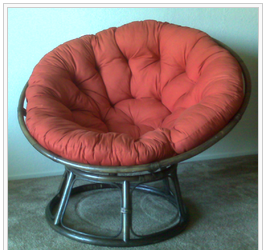 about it. I have a Craigslist couch. A Craigslist coffee table. A Craigslist desk chair. But as a measure of the culture’s pulse, one only has to spend a little time on Craigslist to confirm something we old farts have known for a while: that sometimes the next generation, the computer-savvy, e-mailing, text-messaging generation, often presents as functionally illiterate. Whole rafts of them are out there selling products—often products that I, after working for more than thirty years, can’t afford—yet they cannot spell the names of the things they’re trying to sell. (I don’t think most of these can be blamed on the bane of our existence: autocorrect)
about it. I have a Craigslist couch. A Craigslist coffee table. A Craigslist desk chair. But as a measure of the culture’s pulse, one only has to spend a little time on Craigslist to confirm something we old farts have known for a while: that sometimes the next generation, the computer-savvy, e-mailing, text-messaging generation, often presents as functionally illiterate. Whole rafts of them are out there selling products—often products that I, after working for more than thirty years, can’t afford—yet they cannot spell the names of the things they’re trying to sell. (I don’t think most of these can be blamed on the bane of our existence: autocorrect)
 There are, for example, a lot of people out there who are trying to sell their lamps, wine racks, bookshelves, and coffee tables made of a material called rot iron. It doesn’t sound very appealing to me; nor does it sound very stable. Especially when I’m invited to purchase a queen sized bed made out of rot iron. Hardly sounds like it would last through one galloping good marital session. Some of them have items made out of rod iron. A little less unpleasant. One aspiring seller even told me that rod has generally replaced wrought as the proper term. I expect if I inquired of the rest, they’d tell me, as they learned in elementary school phonetic spelling, that as long as they can be understood, it’s fine.
There are, for example, a lot of people out there who are trying to sell their lamps, wine racks, bookshelves, and coffee tables made of a material called rot iron. It doesn’t sound very appealing to me; nor does it sound very stable. Especially when I’m invited to purchase a queen sized bed made out of rot iron. Hardly sounds like it would last through one galloping good marital session. Some of them have items made out of rod iron. A little less unpleasant. One aspiring seller even told me that rod has generally replaced wrought as the proper term. I expect if I inquired of the rest, they’d tell me, as they learned in elementary school phonetic spelling, that as long as they can be understood, it’s fine.
Just as the roadsides everywhere are littered with discarded plastic water bottles, the homes, condos and apartments in the Boston area seem to be littered with small, round, dish-shaped chairs. These Papasan chairs are referred to, by Craigslisties, as Papusums, conjuring up small, ratlike nocturnal animals, papazums, papazans, papasams, and a whole host of other spellings. Every day, between three and ten are offered for sale. Sometimes with ottomans. Ottamuns. Attomans. Attumans. We live, it seems, in the papasan and ottoman empire. One thing is clear–even if their owners don’t know what they’re called–there are enough of them out there that if they banded together, they could take over the world.
Often, Craigslist consumers are invited to purchase products that seem to have lives of their own. One might become the next owner of an “antic MIT desk” for only $100.00. If you are interested in floor level interactions, there are rugs from Central Anatolia where the sizes, colors and motives vary. In a house where the desk is antic and the rugs have motives, you might want to be very careful about also acquiring a Craftsman 10” radio alarm saw. It’s hard enough to get up in the morning without so much worry and commotion.
Perhaps you’re new in town and trying to set up an apartment. Craigslist is the place to go. Everything a homeowner needs is available. Imagine becoming the proud owner of the following: carpet, table, lamp, dust bean, wardrove, dubei, etc. You could augment this with plates, glasses, cuttery, and tones of tuber-wares. Then finish that place by acquiring a “burrow, with attached mirror.” Maybe a house like that would be the perfect place for a Japanies stile bad or, if you’re looking for a more adventurous bad, you might get the queen bed with mattress and hotspring. You could trick this place out with three large droors and that breakfast tray where “one leg needs fixation.”
Everything a homeowner needs is available. Imagine becoming the proud owner of the following: carpet, table, lamp, dust bean, wardrove, dubei, etc. You could augment this with plates, glasses, cuttery, and tones of tuber-wares. Then finish that place by acquiring a “burrow, with attached mirror.” Maybe a house like that would be the perfect place for a Japanies stile bad or, if you’re looking for a more adventurous bad, you might get the queen bed with mattress and hotspring. You could trick this place out with three large droors and that breakfast tray where “one leg needs fixation.”
Some of these household furnishings really do have promise. I was extremely tempted by the “Beautiful White Amour.” I thought it would go nicely in my room where I’ve already placed “very Sheik Slate Top Teak Furniture.” But suppose the amour and the sheik didn’t get along? Would I have to break out my “whine glasses from Pottery Barn?”
Sometimes, dear reader, things do just get too personal. Who would feel comfortable brushing their teeth next to the 24” wide bathroom vanity assembly with sink bowel top included? Or, for that matter, buying Rover that Self-Feeding Dog Bowel? It’s all too much for me. I’ve passed, as well, on the seller who promoted her wares by saying, “This would be nice to have in a nursery if you have a girl instead of a glider.” Honestly, if I gave birth to a glider, no amount of nice furniture could comfort me. Indeed, the idea of these dangerous products is enough to send me to my “armoir, closeth or wardrove” where I’m going to put on my White Petty Coat (formerly the property of a navy man, perhaps) and go out for some air.
Author’s note: Despite my amazing collection of Craigslisties, I have gotten some lovely things from Craigslist, and I’ve met some splendid people, and collected great stories, in my travels.
March 7, 2016
Unsolicited Advice for Those Who Write Cozy Mysteries
Kaitlyn Dunnett/Kathy Lynn Emerson here, stating up front that I love mysteries at the cozy end of the traditional mystery spectrum. Just lately, however, I keep encountering cozies that contain one or more of my personal pet peeves. These are things that don’t necessarily affect the plot or character development or make a good book into a bad one, but they sure do annoy me. And, yes, in the interest of total honesty, I admit I’ve committed most of these sins myself at one time or another . . . but, hopefully, only once.
So here, totally unsolicited and possibly unwanted, is my list of things I think mystery writers should watch out for if they want to avoid annoying me while I’m reading one of their mystery novels.
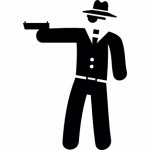 Number Ten: If you must give a character a gun, take the time to learn the basics. You don’t have to go into a lot of detail. You just have to make sure that the details you do use aren’t wrong. With a nod to Lee Lofland, and to my friend Professor Robert Martin of New Sharon, Maine, that is not cordite you smell after a gun is fired. There’s also a difference between a revolver and an automatic.
Number Ten: If you must give a character a gun, take the time to learn the basics. You don’t have to go into a lot of detail. You just have to make sure that the details you do use aren’t wrong. With a nod to Lee Lofland, and to my friend Professor Robert Martin of New Sharon, Maine, that is not cordite you smell after a gun is fired. There’s also a difference between a revolver and an automatic.
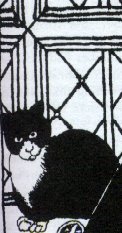 Number Nine: If you have a cat or dog in the story (or a gerbil, or a parrot, or a rabbit), don’t forget about the poor thing. See Jen Blood’s recent blog for more on this subject. And here is the flip side: if you have a cat or dog in the story (or a gerbil, or a parrot, or a rabbit), don’t overuse the poor thing. We don’t need to know what the sleuth’s pet is doing in every scene. Yes, they’re cute, but a little goes a long way.
Number Nine: If you have a cat or dog in the story (or a gerbil, or a parrot, or a rabbit), don’t forget about the poor thing. See Jen Blood’s recent blog for more on this subject. And here is the flip side: if you have a cat or dog in the story (or a gerbil, or a parrot, or a rabbit), don’t overuse the poor thing. We don’t need to know what the sleuth’s pet is doing in every scene. Yes, they’re cute, but a little goes a long way.
Number Eight: Don’t try to convert your readers. I’ve read way too many mysteries lately in which the author, writing about a character who has chosen a certain lifestyle, goes on and on about it. There’s nothing wrong with being a vegetarian, or making meditation part of your life, or being an activist of some kind, but it’s far too easy for a character to become preachy, especially if that character shares the author’s opinions.
Number Seven: Watch your transitions. Sometimes this is the fault of the conversion to ebook format, but when a scene or a point of view changes, there really needs to be a space between paragraphs or a segue of some kind in the text to alert the reader to the shift.
 Number Six: Despite a recent controversy stirred up by a teacher who forbade her students to use the boring “s/he said” in their writing, “said” and “asked” are still the best choices in dialogue because they are invisible. They don’t slow readers down. Trying to let us know how your character said something? Show us what they’re doing as they are speaking. Yes, it’s okay for someone, occasionally, to shout or exclaim or whisper. But people rarely shrill their words, and I still remember an author I read back in the 1980s whose characters, when annoyed, “gritted” their words.
Number Six: Despite a recent controversy stirred up by a teacher who forbade her students to use the boring “s/he said” in their writing, “said” and “asked” are still the best choices in dialogue because they are invisible. They don’t slow readers down. Trying to let us know how your character said something? Show us what they’re doing as they are speaking. Yes, it’s okay for someone, occasionally, to shout or exclaim or whisper. But people rarely shrill their words, and I still remember an author I read back in the 1980s whose characters, when annoyed, “gritted” their words.
Number Five: Get rid of those repetitious words. I don’t just mean things like “only” and “just” and “even” that creep into our writing and don’t add anything to it. I also mean catching the places where the same word appears three or four times on the same page. This is a lot easier to do if you can let the manuscript rest for awhile before the last revision. With a break, the repetitions tend to leap out at you.
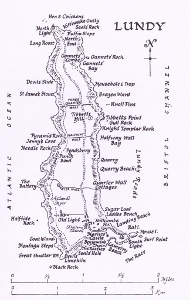 Number Four: Learn to read a map! Yes, I know it isn’t always possible to visit the place where your mystery takes place, but if you have someone driving along Rt. 1 and your character is admiring the view of the ocean, you’d better be darn sure she can actually see the water from there. If you made up a town, take the time to make a map, one that shows compass directions and on which you make note of distances to other places and who lives in what house. The last thing you want is for a reader to be pulled out of your story by trying to figure out how a character got from Point A to Point B.
Number Four: Learn to read a map! Yes, I know it isn’t always possible to visit the place where your mystery takes place, but if you have someone driving along Rt. 1 and your character is admiring the view of the ocean, you’d better be darn sure she can actually see the water from there. If you made up a town, take the time to make a map, one that shows compass directions and on which you make note of distances to other places and who lives in what house. The last thing you want is for a reader to be pulled out of your story by trying to figure out how a character got from Point A to Point B.
Number Three: Get the law enforcement details right. Every state is different when it comes to what law enforcement agency investigates murders, but it isn’t hard to find out how things work where your novel is set. Most police departments have someone who handles public relations and will be happy to answer questions. Since the sleuth in a cozy is an amateur, you may not need to know a lot, but you should know the rank of the investigating officer and what department he or she belongs to. Check on where the body will be sent for autopsy, too.
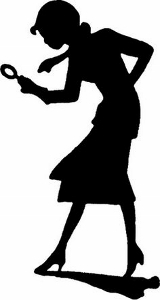 Number Two: Give your sleuth a darned good excuse to get involved in trying to solve the murder. This is hard. Only so many relatives and close friends are likely to be wrongfully accused of murder. But since the protagonist in a mystery novel is supposed to be clever enough to figure out who dunnit, it only makes sense that she also be smart enough to let the police handle the investigation . . . unless there’s an excellent reason why she can’t. Don’t even get me started on the TSTL (too stupid to live) sleuth—that’s a whole blog in itself.
Number Two: Give your sleuth a darned good excuse to get involved in trying to solve the murder. This is hard. Only so many relatives and close friends are likely to be wrongfully accused of murder. But since the protagonist in a mystery novel is supposed to be clever enough to figure out who dunnit, it only makes sense that she also be smart enough to let the police handle the investigation . . . unless there’s an excellent reason why she can’t. Don’t even get me started on the TSTL (too stupid to live) sleuth—that’s a whole blog in itself.
Number One: Make sure your amateur detective actually detects. In far too many books I’ve read in the last year or so, the sleuth is thrust into the middle of a murder case but doesn’t actually do anything to help solve the crime. She doesn’t actively pursue leads or ask questions and only stumbles over clues by accident. She has no idea who is guilty until that person confesses, usually while threatening said sleuth. A related rule of thumb, obvious as it may seem, is “A mystery should be mysterious.”
Did I miss any? Readers, please chime in with your pet peeves, or with comments about my top ten. And yes, also feel free to illustrate your pet peeves with examples from the Liss MacCrimmon or Mistress Jaffrey mysteries, or from any other books I’ve written.
Kathy Lynn Emerson/Kaitlyn Dunnett is the author of over fifty books written under several names. She won the Agatha Award in 2008 for best mystery nonfiction for How to Write Killer Historical Mysteries and was an Agatha Award finalist in 2014 in the best mystery short story category for “The Blessing Witch.” Currently she writes the contemporary Liss MacCrimmon Mysteries (The Scottie Barked at Midnight) as Kaitlyn and the historical Mistress Jaffrey Mysteries (Murder in the Merchant’s Hall) as Kathy. The latter series is a spin-off from her earlier “Face Down” series and is set in Elizabethan England. Her websites are www.KaitlynDunnett.com and www.KathyLynnEmerson.com
March 6, 2016
Tuning The Ear
Dorothy Cannell: For the past several years I have been focusing much of my mystery  reading on golden oldies in the tradition of Agatha Christie, Dorothy Sayers, Josephine Tey, Georgette Heyer, Patricia Wentworth, etc.. The reason – I enjoy them and they are relatable to my memories of growing up in England. Apart from the murders that is! No one I knew got ‘done in’ with a blunt instrument, stole information from the Foreign Office to aid The Enemy, or altered great Aunt Henrietta’s will before poisoning her snuff.
reading on golden oldies in the tradition of Agatha Christie, Dorothy Sayers, Josephine Tey, Georgette Heyer, Patricia Wentworth, etc.. The reason – I enjoy them and they are relatable to my memories of growing up in England. Apart from the murders that is! No one I knew got ‘done in’ with a blunt instrument, stole information from the Foreign Office to aid The Enemy, or altered great Aunt Henrietta’s will before poisoning her snuff.
I’m talking about the days of steam engines, sending telegrams, sitting by the fire listening to plays on the radio, and going down the road to the telephone box to place a call. Also I wanted to write a series set in a time when conversation involved language – words and phrases that are vanishing from common usage – and only by immersing myself in such reading could I bring some of these snippets back into my head.
 Before starting on Murder at Mullings, the first of my Florence Norris books set in the nineteen-thirties, I began a notebook of ‘talk” and continued to add to it through Death at Dovecote Hatch and through the plotting of Peril in the Parish. Here are some examples:
Before starting on Murder at Mullings, the first of my Florence Norris books set in the nineteen-thirties, I began a notebook of ‘talk” and continued to add to it through Death at Dovecote Hatch and through the plotting of Peril in the Parish. Here are some examples:
Expostulated.
Adjured.
Knocked around the world.
He’s (she’s) good value.
Put the touch on him.
How utterly ghastly.
My giddy aunt!
A dull dog.
Puling creature.
What a filthy thing to say.
Made the most frightful scene
Don’t be beastly, darling!
Uttered a strangled cry.
Nothing of the Sahib about the Colonel.
Respectable woman of straightened means.
Handsome of you.
Completely shattered.
Coming along a treat after his operation.
None of your lip, my girl.
That one would steal from a blind man’s mug.
You say another word and I’ll knock you into the middle of next week.
‘Nonsense’, he ejaculated! (My favorite).
I don’t know that this will be helpful to anyone, but I’ve typed out two of my handwritten  pages. Short of taking a time machine back to the nineteen-thirties, reading my way there was not only useful for tuning my ear but enormous fun. I recommend the trip.
pages. Short of taking a time machine back to the nineteen-thirties, reading my way there was not only useful for tuning my ear but enormous fun. I recommend the trip.
Happy March.
Dorothy.
March 4, 2016
Weekend Update: March 5-6, 2016
 Next week at Maine Crime Writers there will be posts by Dorothy Cannell (Monday), Kaitlyn Dunnett/Kathy Lynn Emerson (Tuesday), Kate Flora (Wednesday), Susan Vaughan (Thursday), and John Clark (Friday).
Next week at Maine Crime Writers there will be posts by Dorothy Cannell (Monday), Kaitlyn Dunnett/Kathy Lynn Emerson (Tuesday), Kate Flora (Wednesday), Susan Vaughan (Thursday), and John Clark (Friday).
In the news department, here’s what’s happening with some of us who blog regularly at Maine Crime Writers:
from Kaitlyn Dunnett/Kathy Lynn Emerson: Good news from both of me this week. As Kaitlyn, I’ve just sold the audiobook rights to the next Liss MacCrimmon mystery (Kilt at the Highland Games, out in hardcover in July) to Dreamscape. They’ll bring the book out on CD, which is a first for me. No word yet on who will be narrating or when it will be available to buy. Meanwhile, as Kathy, I’ve sold another Lady Appleton short story, “Lady Appleton and the Creature of the Night” to Alfred Hitchcock Mystery Magazine. This one is as close to writing a paranormal story as I get (that’s to say, not very) and features the sleuth from my Face Down series set in sixteenth-century England. It will be published some time in 2017.
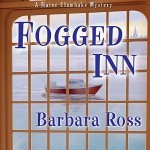 From Barb Ross: Speaking of audiobooks, the downloadable version of the audibook for Fogged Inn, the fourth Maine Clambake Mystery was released yesterday. You can access it here. The MP3 version is coming in June.
From Barb Ross: Speaking of audiobooks, the downloadable version of the audibook for Fogged Inn, the fourth Maine Clambake Mystery was released yesterday. You can access it here. The MP3 version is coming in June.
An invitation to readers of this blog: Do you have news relating to Maine, Crime, or Writing? We’d love to hear from you. Just comment below to share.
And a reminder: If your library, school, or organization is looking for a speaker, we are often available to talk about the writing process, research, where we get our ideas, and other mysteries of the business. Contact Kate Flora: mailto: kateflora@gmail.com
March 3, 2016
Micro-ideas from a high-definition world
Maureen here, still on a high from a three-day writing marathon that resulted in an (almost but not quite) completed first draft of the next book in the Bernie O’Dea mystery series, “No News is Bad News.”
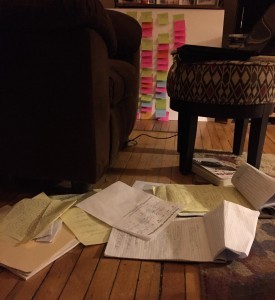
A lot goes into getting that first draft done, big things and little ones.
First drafts are funny — don’t worry this won’t be a tortured “how I produced the first draft” post — in that, at least in my case, there’s a lot of stuff in them that may not make the final draft. People ask writers where they get their ideas. Frequently. I’ve written about that before. It’s difficult, yet easy, to answer because there are so many ways to answer it. The bottom line is that’s because there are so many types of ideas: big picture ones, themes, plot twists, plot frames. You get the picture. But one thing I thought a lot about as I got really immersed in this book are the micro-ideas.
I read once that a neighbor of one of the Wyeths (the three-generation artist family) said something like they couldn’t hang out their laundry because he’d come over and paint it. I’m too screen-fried right now to look it up on the Internet and tell you which Wyeth and what the exact quote was, but you get what I mean.
I feel kind of like that as a writer. The Wyeth not the neighbor. Everything around me is fair game. It’s not even like I’m looking for it, it’s just there. A spoken phrase, a mannerism, a moment, a feeling. I’ll see or hear or experience some little thing and — zing! — it hits me and I have to get it in my book. HAVE TO get it in there.
Here’s something you should know about me. I live in a high-definition world. Every morning the sunrise thrills me. The subtle differences, depending on the weather, are a fascination. Sunsets, too. My Facebook friends I’m sure get tired of the endless parade of the sun coming up and going down as seen through the lens of my iPhone.

Have I ever seen a sunset I didn’t like? Do you have to ask? A million photos of them taken from my front steps.
The world itself is a fascination. What people are doing. What they’re saying. What the thing is out the window. I can’t go in Target or Pier 1 because there are too many bright colors and I want to buy everything. Because they’re bright colors. Yeah, I know, okay? Smells, colors, sounds, feelings, impressions — they’re all popping out and zipping around, orbiting and dodging. I’m rarely bored. Some of things are just distractions, others irritations. Lots of them are momentary delights. Others land and take up residence, either as obsessions that I have to take a zillion photos of — sunrises, sunsets, the railroad bridge behind my workplace — or details that end up in my books.
Is this all a bad thing for a writer? Not if it becomes part of the process.
For instance, Trudi Knoedler, the producer of the audio version of “Cold Hard News,” the first in the Bernie O’Dea mystery series, mentioned to me recently she’s narrated German paranormal erotica. I couldn’t get the phrase out of my head. Boom! I worked it into the book. It’s just a moment, one tiny one, but it’s there.
I recently read the word exsanguinate. I had to have it. Not only for the look and sound of it, but what it means. Completely drained of blood. I’m sure I’ve heard it before, but we were only acquaintances. We didn’t know at the time how much we loved each other. Now we do. Again, couldn’t get it out of my head until I typed it on a page.
Here’s another one. This fall, when hunting season started, a line from the Talking Heads song “Life During Wartime” kept going through my head: The sound of gunfire, off in the distance, I’m getting used to it now… It got to the point that I not only had to listen to the song, I had to put it in my book.
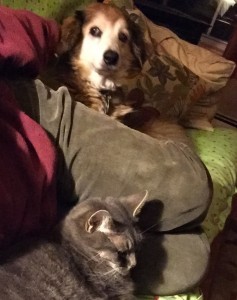
I may get a variety of vibes from other people, but my kitty and doggie always make me feel good.
Another one: I realized at some point in my life, that almost everyone I come in contact with makes me feel something physically. Once I realized it, I knew it had always been there. I found it very interesting. I started noting the feelings, how strong they were, who triggered what. I don’t know if everyone has this or not. The feelings run the gamut. I’m not always thinking about them, but they’re always there and now that I know it’s going on, it adds another dimension to life. That got into the book, too.
So what happens, though, when all this stuff goes in a book? There’s a writing rule everything in a book needs to advance the story, whether it’s plot, character development, theme. I agree with that. Too many random things confuse and distract readers and can make for a slow, boring read.
But I don’t have total control, at least initially, over this. The book is taking shape even when I’m not writing. It’s feeding on all that stuff swirling and popping around me, grabbing it, stuffing it in. Some of it’s really good and healthy, like kale or carrots. Some of it’s Snickers bars and Giffords chocolate ice cream. So the first draft or two can end up being flabby, with bad skin and sticky hands. I won’t torture the metaphor further, you get what I’m saying.
So my rule with these things is that if they end up making the final cut, they have to be there for a reason.
German paranormal erotica? It’s already doing it’s job as a tiny bit of insight into a character.
Exsanguinate? Oh my yes. How could I not?

The bridge behind my office. Another obsession.
The Talking Heads song? As long as I can get permission to use the lyrics, it underlines some of what’s going on in the protagonist’s head. I don’t know if it was listening to the song or if the muse sent me the song, but there are a lot of lines in it that fit while I was writing. If it’s not going to work out, I’ll have to listen to REO Speedwagon or something like that for a solid month to purge my head of it.
The physical feeling from other people? My protagonist has that, too. I just have to fine-tune the writing so it works and is convincing to readers instead of being this weird thing that will just make her (and me) seem a little, um, creepy and someone to avoid.
There are hundreds of other things that landed in the book from that constant carnival that’s swirling around that may not make it. They were still fun while they lasted. I’m not sure where else a writer would get her ideas.
Maureen Milliken is the author of “Cold Hard News,” the first in the Bernie O’Dea mystery series. Follow her on twitter @mmilliken47. Like her Facebook page, Maureen Milliken mysteries, and sign up for email updates at her website, maureenmilliken.com.
A Look Back
Bruce Robert Coffin checking in. I’m sitting in my attic writing nook reflecting on the past year. What a ride! January 1st, 2015 found me with the usual resolutions, eat better, lose a few pounds, workout more, you know the ones. But last year I added a goal. Get published! It didn’t matter what it was; short story, grocery list, thank you note, fortune cookie advice, I wasn’t particularly choosy. I’d even entertained the thought of contacting Salada to see if they’d allow me to write a bit of tea bag advice. Hey, I was desperate.
Of course, what I really longed for was to see my first novel in print. The loftiest of all writing goals. Truly unattainable stuff. Friend and fellow Maine writer Chris Holm gave me some great advice. He said: “If you’re gonna step up to the plate, you’ve gotta swing for the fence, every single time.” He was right, of course. But that didn’t stop me from checking my in bin to see if Salada had responded. Nope. Damn.
Last April I attended my second Maine Crime Wave, this time as a wannabe published writer (the first had been as a guess panelist). The cool thing about events like this is getting the chance to chat with successful authors, both in formal and informal settings. I’ve found them all to be very gracious and approachable. And they always say encouraging things like: “Remember, we all began as unpublished authors, too.” In my heart of hearts I knew this was true, but it all sounded a bit too far-fetched. The kind of thing an art teacher might say if you turned in a blank canvas because you couldn’t think of a single thing to paint.
“Oh, I love what you’ve done here. So minimalist. So abstract. So bold.”
Please.
Like Jim Hayman, Kate Flora, and Gerry Boyle weren’t born already published!
The evening before the Crime Wave, I attended the Friday night reading dubbed “Two Minutes in the Slammer.” A cool moniker for what was really a chance to stand up in front of a room full of accomplished writers and wannabes (like me), knees knocking, and read something you’d written. The literary equivalent of grabbing the listener by the ear and not letting go. Knock their socks off, I was told. Sure, I said, until I realized we only had two minutes in which to accomplish this. Talk about nerve-racking.
After deciding upon a passage from my one of short stories, titled Bygones, I spent the afternoon practicing my delivery in my kitchen, to a audience of a half dozen empty dining room chairs. Timed by my microwave, trying not to sound like Peter Brady (Remember the episode where his voice kept changing as he hit puberty?), I honed the abridged version of my story until it was precisely two minutes in length. It was okay, I thought. I looked at the dining room chairs. Not a naysayer among them. I took their silence as a sign of agreement.
Hours later I found myself in the lower level of the Portland Public Library. Pacing as I stared at the stage. What the hell? No one had said anything about getting up on a stage. Please, God, I thought. Don’t make me read first. Or even worse, last!
As the seats slowly filled up, I continued to wear out the floor at the back of the room. Until I saw a familiar face, Paul Doiron. You know, author of the acclaimed Mike Bowditch mystery novels, about the coolest outdoorsman since Grizzly Adams. A fan of his books, I approached Paul hoping the pass the time with a little banter about what he was up to, wanting badly to take my mind off that stupid stage. As usual, Paul was very engaging and down to earth. If he noticed my frequent nervous over the shoulder glances at the stage, he never mentioned it. Paul told me about a book he was writing, The Precipice, set in the middle of Maine’s Hundred Mile Wildness along the famed Appalachian Trail. A fan of the AT myself, I mumbled something incoherent about a mystery novel that I’d been working on, titled “Trail Magic”, about a female FBI agent trying to convince others of the existence of a serial killer stalking victims along the entire AT. Always the gentleman, Paul said he thought it sounded “cool.” Somehow, given his stature in the mystery writing community, and me being an unpublished author, it didn’t feel very cool. In all honesty, I felt more like a tool.
Again, I glanced at the stage. Any word from Salada?
Everyone took their seats as the rules were explained. Each of the thirteen readers would be given a moment to either tell the audience a bit about themselves or explain the passage from which they’d be reading. Following the intro the two minutes would begin. The two minute limit would be strictly enforced, they said. They even had a timer! Alarmed, I wondered if the timer on my microwave had ever been calibrated…
The order of the readers was announce. I wasn’t first! Yay. Tucked safely in the middle, I figured if I sucked royally no one would remember. I listened enthusiastically as the others spewed forth great prose. Some was humorous, some action-oriented, and some just plain old good writing. When it was over, each of us congratulated the others on our delivery and our prose while we awaited word from the judges.
A number of people approached me and praised my reading, among them were Jim Hayman and Chris Holm. They seemed genuinely impressed with what I had read. But I remained doubtful. What if Jim and Chris were just really good at improvisational praise? My dining room chairs hadn’t instilled a lot of confidence.
Several minutes later the results were finally tallied. The judges announced two winners, and I was one of them! I was elated. Not only had I survived my Two Minutes in the Slammer, I’d won my freedom!
Winning Two Minutes in the Slammer hadn’t been on my list of New Year resolutions, but the way I was feeling, it shoulda been.
Screw you Salada!
Let’s just say that the remainder of the year exceeded my wildest hopes and expectations. In November my very first short story, “Fool Proof”, was published in the Best New England Crime Stories 2016 anthology, Red Dawn. I obtained an honest-to-god literary agent, Paula Munier of the Talcott Notch Agency. And with Paula’s help I’ve just recently managed to fulfill my lifelong dream of having a novel published. In fact, not just one novel but three! I’m happy to announce that HarperCollins will be publishing my John Byron Mystery Series under their Witness Impulse imprint. The debut novel will be released in early fall.
And finally, as if all of this wasn’t enough, the genie popped out of the lamp one more time in February (Yeah, I know it’s a different year, but this is my blog.), handing me an email from Mr. Mystery himself, world renown publisher, editor and New York bookstore owner Otto Penzler, informing me that “Fool Proof” had been picked as one of the twenty best mystery stories published in North America during the 2015 calendar year! Holy moly! My story will now appear in Houghton Mifflin Harcourt’s Best American Mystery Stories, 2016.
In retrospect, my diet may not have improved much, my appearances at the gym are somewhat sporadic, I’ve actually gained a few pounds (muscle I imagine), but as far as my writing goals are concerned, I somehow managed to put one over the fence.
Grab that would you, Chris? I’d like to keep it as a momento.
I’m not sure if Clarence was right about there being sone correlation between bells and angels getting their wings (trust me, I’m no angel), but I can now say with certainty, if you want something bad enough, and you’re willing to work hard to get it, really hard, dreams really do come true.
March 1, 2016
What Am I Up To?
Thank you for asking.
Hi. Barb here.
Fogged Inn, the fourth Maine Clambake Mystery launched last week.
An autumn chill has settled over Busman’s Harbor, Maine, but Julia Snowden is warming up the town by offering lobster stew at the local diner. When her landlord discovers a dead body in the walk-in refrigerator, Julia must figure out who ordered up a side of murder.
Early reviews have been good, which is fun and gratifying.
“I started reading and I just couldn’t stop.”
Escape with Dollycas Into a Good Book, February 2016
“This is the 4th book in her Maine Clambake Mystery series and I have to say they just keep getting better.”
Cozy Mystery Book Reviews, February 2016
“An entirely surprising conclusion wraps up this smartly-plotted mystery whose heroine is intelligent and as appealing as the gorgeous Maine coast.”
King’s River Life, February 2016
“Quite honestly, there is not one thing I would change about this book…”
mjbreviewers, February 2016
You can purchase Fogged Inn in paperback and e-book at Amazon, Barnes & Noble, Books A Million, iTunes, Kobo, and other fine retailers including your local, independent bookstore. The audiobook is coming soon and just yesterday I heard there will be a large print version. Not sure of the release date for that yet.
My editor signed off on my novella for Eggnog Murder
It’s Christmas in Maine! This holiday season, join New York Times bestselling author Leslie Meier and Lee Hollis and Barbara Ross and cozy up with a glass of eggnog and enjoy the spirit of murder and mystery in a Yultide treat perfect for those winter holidays…
(Or as Amazon calls it, by Leslie Meier, Lee Hollis and one other, which makes me laugh.)
I’m calling my contribution to the collection Maine Clambake Mystery 4.5, because it fits neatly between Fogged Inn, which takes place the week after Thanksgiving, and Maine Clambake Mystery #5, Iced Under which takes place in the end of February.
Here’s the description my novella, “Nogged Off.”
Julia Snowden’s tenant Imogen Geinkes seems to be jinxed. First, her poorly named “Killer Eggnog” gives all her co-workers food poisoning at the holiday party, then her boyfriend’s body shows up in Julia’s moving truck as she’s headed back to Busman’s Harbor. Now Julia has to get moving to catch the cold-hearted culprit.
You can pre-order Eggnog Murder at Amazon, Books A Million, Kobo, and other select retailers.
News from Level Best Books
 Bruce Coffin is a Maine Crime Writer, and we’ve already announced that his story, “Foolproof,” in Best New England Crime Stories: Red Dawn was chosen as a Best American Mystery Story of 2015 by Otto Penzler and guest editor Elizabeth George. It will appear in the Best American Mystery anthology when it is released in the fall. In past years, Level Best has had stories recognized as “Other Distinguished Stories” and listed in the back of the book, but this is our first “Best.” It’s a great way for the former editors to go out.
Bruce Coffin is a Maine Crime Writer, and we’ve already announced that his story, “Foolproof,” in Best New England Crime Stories: Red Dawn was chosen as a Best American Mystery Story of 2015 by Otto Penzler and guest editor Elizabeth George. It will appear in the Best American Mystery anthology when it is released in the fall. In past years, Level Best has had stories recognized as “Other Distinguished Stories” and listed in the back of the book, but this is our first “Best.” It’s a great way for the former editors to go out.
Three Red Dawn authors’ stories made the Derringer Award short lists, announced by the Short Mystery Fiction Society today. Vy Kava for “Hero,” Best Flash, and Chris Knopf for “Kill Switch” and Shelly Dickson Carr for “Words Can Kill” for Best Short.
We’re very proud of all of them!
You can buy Best New England Crime Stories: Red Dawn in paperback and for Kindle at Amazon, for Nook at Barnes & Noble and in paperback from Level Best Books.
And I’m hard at work on Maine Clambake Mystery #5, Iced Under
I am hard at work on Maine Clambake Mystery #5 now. It will be published December 26, 2016.
In other news…
In other news, while you’re reading this, my husband and I are driving back from Key West to New England and are happily working on the Wedding of the Century, our daughter’s, taking place in Portland, Maine in May.
So it’s a busy, crazy time.
February 29, 2016
Death and Taxes; or, The Author and the IRS
Before I start writing: I am Lea Wait. I’m a writer, not an accountant.
But a few days ago Maine Crime Writers reader Ann Hough asked how I — and other Maine Crime Writers – set up the business side of being a writer. (MCWers and other authors — please comment!)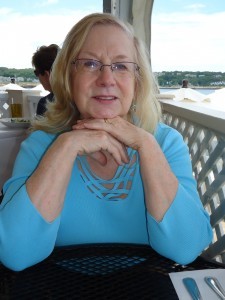
I know a few writers, generally very successful ones (think: always on the New York Times best seller list) who have incorporated themselves for tax and legal reasons.
But I suspect most of us file, as I do, on a Schedule C (“Profit or Loss From Business”). My husband and I actually file three Schedule Cs — one for my writing, one for his art, and one for our antique print business.)
On mine I list my occupation as “writer” (code 711510) and include income and expenses for both writing and speaking, since most of my speaking fees are related to my writing.
And before I go any further: the key to establishing yourself as an author with the IRS is having records of everything you declare, in any category, both income and expenses, in case the IRS questions whether your writing is a business or a hobby. It used to be understood that a business needed to make a profit on a fairly regular basis — some said every 3 years. My accountant has said that, with documentation, the IRS is more flexible about authors these days. But the key is always documentation. You have to be able to prove you tried seriously to make money from your writing.
OK. Income. That includes advances and royalties from book sales. (The percentage paid to your agent is listed under “commissions”.) Income includes on-line or bookstore sales from self-published books. It includes every dollar you earned from free-lancing, or writing short stories. It includes honorariums or payments from libraries or schools or conferences, or money from editing. I make copies of any checks I’ve earned during the year, no matter how small, so I can just add them up in January or February, when I’m doing my taxes. You didn’t have any income from writing this year? Be prepared to provide proofs that you actively tried to make money: letters (and rejection letters) from agents and editors. Query letters you submitted. Attendance at writing seminars or conferences.
Expenses? Again, having records is critical. I suspect authors do this differently, but I save receipts for every magazine and book I buy during the year. When I’m doing my taxes I divide them into “books I read to learn more about writing or publishing,” “books I read to keep abreast of the market,” “books I read for research,” and “other.” “Other” books are not deductible. The others are. I go through the same exercise with magazines, since they’re on a separate IRS line.
Dues to writing organizations are deductible, and they add up. This year I’m a member of Sisters in Crime, Mystery Writers of America, The Author’s Guild, Novelists, Inc., the Society of Children’s Book Writers and Illustrators, and the Maine Writers and Publishers Alliance.
Did you hire someone to design or maintain your website? Format your e-book? Design a cover? Edit your book? Publicize it? Do you have a post office box you use just for writing (so you don’t list your street address on your website)? Did you buy any equipment used just for writing (e.g. a tape recorder for interviews)? Writing software, e.g. Scrivener? Did you enter any writing contests or pay fees for critiques?
Your can also list marketing expenses (advertisements, printing postcards or other promotional materials), postage (to send those postcards to people on your mailing list or send books to potential reviewers,) the cost of writing classes or conferences, and office supplies (printer ink, paper, notebooks, envelopes, index cards) — again, supplies used just for your writing career. Giveaways – magnets, tee shirts, bookmarks, whatever, advertising your book(s) — yes. Deductible
Travel expenses can be dicey. I keep a record of every mile I drive related to writing … driving to events I’m attending or speaking at, visiting bookstores, going to historical associations or libraries or museums to do research, attending conferences, etc. If the trip involves an overnight stay, the hotel room is deductible. (The late night movie you paid for on your hotel bill isn’t.) Airline tickets, luggage fees, parking expenses, tolls, taxis — all are legitimate expenses when your trip is purely for business reasons. If you add on a day for vacation, you have to deduct that per cent of the expenses. Meals are also questionable. My choice is to list very few — the argument being that even if you’re at home you were going to eat anyway. I wouldn’t want to be called in by the IRS about a restaurant or bar bill. And don’t forget that if you’re lucky enough to be reimbursed for any of these expenses, you can’t declare them. Makes sense.
Although writers often buy clothes they only wear when they’re speaking or attending conferences (occasions that tend to require outfits a bit dressier than the sweat pants we may wear when we work at home), no — sorry — those clothes are not deductible.
Neither are taking your significant other with you on a trip (deduct 50% from expenses) or having your hair done for an awards banquet (you would wash it anyway, right?) or buying souvenirs. Unless, of course, the souvenir is a book on birds in the state where your next book is set, in which case it falls under “Books: research”.
Home offices are only deductible if the space is used exclusively for writing. I’d advise checking with your accountant on that one. If you do take a home office deduction, it has tax implications when you sell your home.
This all sounds more complicated than it really is. The key is recording every time you spend money on something related to running your business. To being an author.
It doesn’t have to be overwhelming. Every time I speak, say, at a library, I keep at least one or more emails from the library proving the event was scheduled, plus copies of any publicity about the appearance. After I return home I list the mileage I drove, any tolls or parking, any honorarium I might have received, a copy of the check, and any profits I might have made from book sales after my talk, clip it all together, and stick it in my “writing” file. Oh, yes: business mileage is deductible at whatever rate the IRS approves. For 2016 it’s $.54 a mile. (Good to know when deciding whether you want to drive 200 miles to speak at a small library.)
As a side — but important — note: If you sell your own books directly to customers you need a “resale” or sales tax number from any state in which you do business. Each state has its own rules. In some states you pay sales tax every month, in some it’s every quarter or six months or yearly. Not complicated, but sometimes the paperwork is a pain.
That’s the way I do it. Any comments, fellow Maine Crime Writers or other authors? Have I forgotten anything? April fifteenth is on the horizon …
—–
Lea Wait writes the Shadows Antique Print Mystery series (latest: SHADOWS ON A MAINE CHRISTMAS) and the Mainely Needlepoint series (latest: THREAD AND GONE,) and historical novels for ages eight an up (latest: UNCERTAIN GLORY). Her LIVING AND WRITING ON THE COAST OF MAINE is about her life as a writer, living with her artist husband.
Lea Wait's Blog
- Lea Wait's profile
- 509 followers



